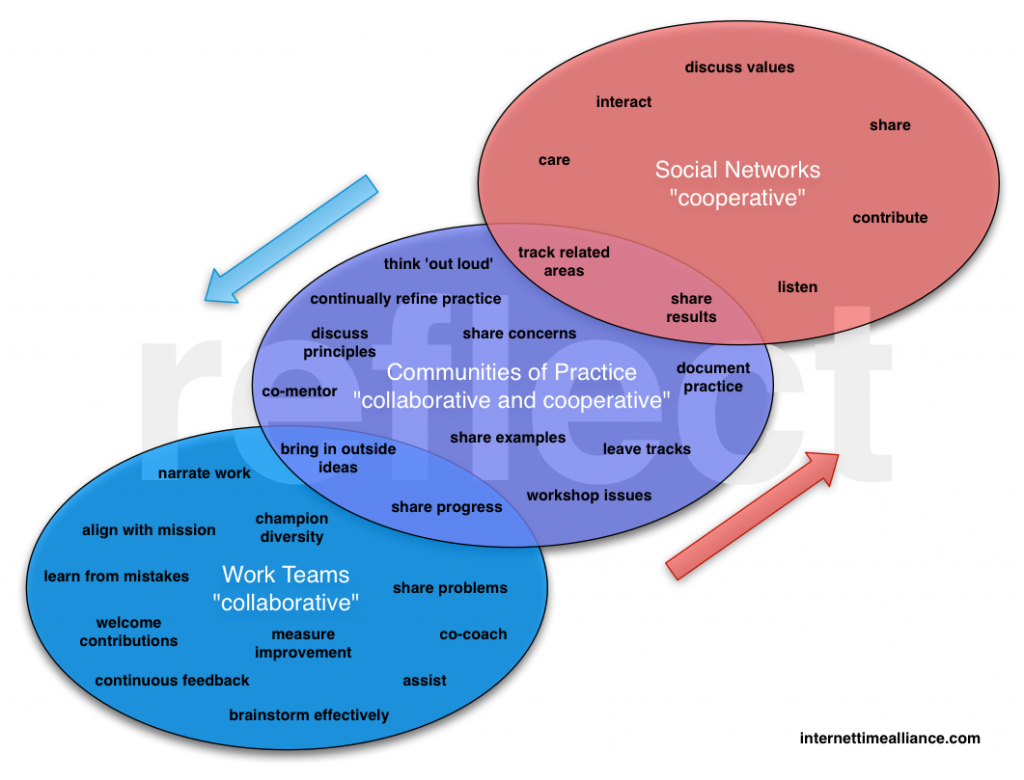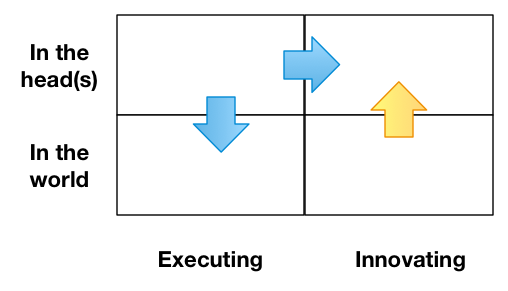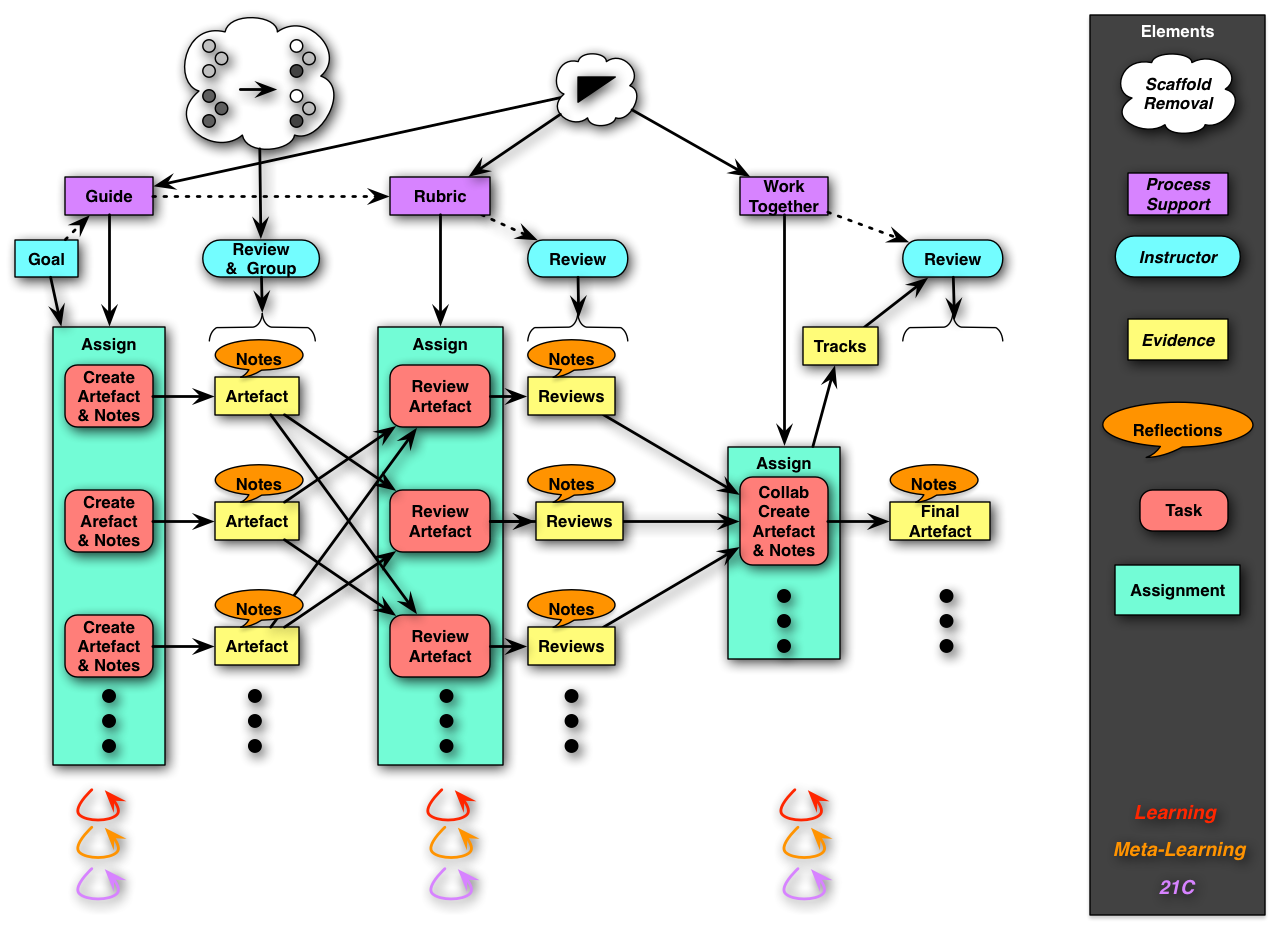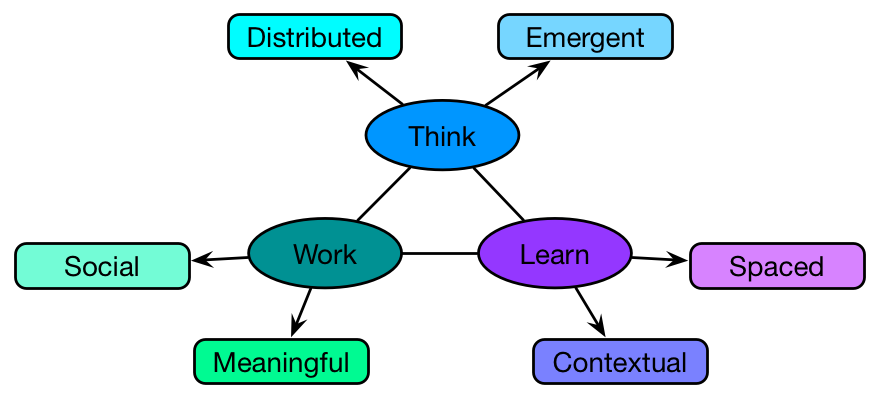While it’s easy to talk about how we need to support the transition from novice to expert, it might help to be a little more detailed. While it’s easy to say that the role of formal learning wanes, and the role of informal learning ramps up, what are the types of support we might look to?
I expanded a core diagram I’ve been using for quite a while, based upon earlier diagrams from others. It’s also been used by others, and the core of the diagram is clear, but I wanted to elaborate it. The underlying point is that as individuals gather expertise the value of formal learning drops, and the value of informal learning increases. Ok, but what does that mean?
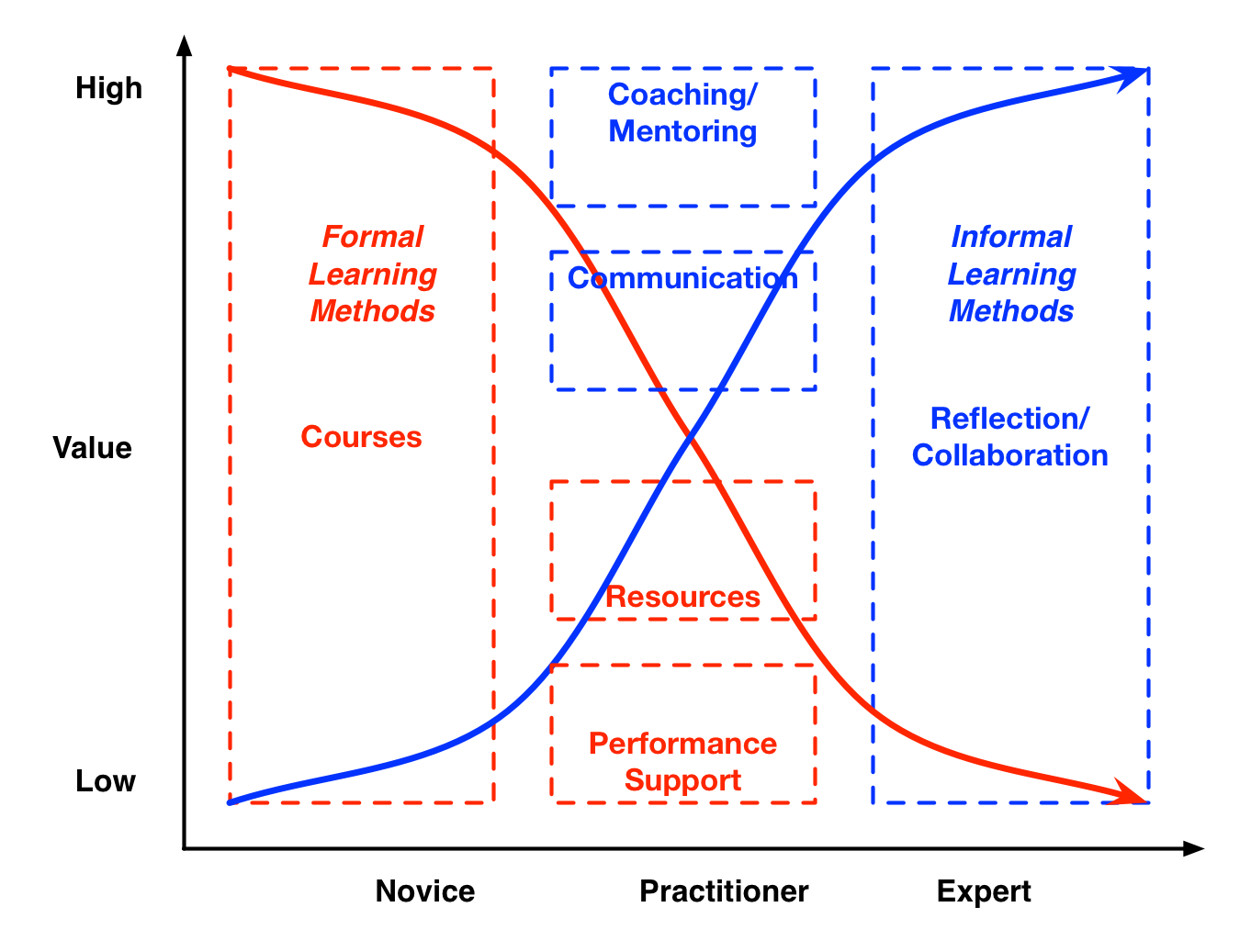 It means that courses make sense for novices, who don’t know what they need nor why it’s important. As they start performing however, their needs change. They start knowing what they need, and why it’s important, and they start just needing those resources. They can be designed or curated, but they are either performance support in the moment or learning resources that develop understanding or abilities. For the former, we’re talking about how-to videos, checklists, lookup tables, etc. For the latter, we might be talking documents, documentaries, diagrams, or more interactive elements such as simulations.
It means that courses make sense for novices, who don’t know what they need nor why it’s important. As they start performing however, their needs change. They start knowing what they need, and why it’s important, and they start just needing those resources. They can be designed or curated, but they are either performance support in the moment or learning resources that develop understanding or abilities. For the former, we’re talking about how-to videos, checklists, lookup tables, etc. For the latter, we might be talking documents, documentaries, diagrams, or more interactive elements such as simulations.
At this stage we also need coaching and/or mentoring, and chances to communicate with our colleagues. It’s the social work that will play a role in the development of the learner through interactions. Obviously, you can be doing communication in courses as well, and reflecting and collaborating at the practitioner stage as well, these are continua, not boxes as portrayed here. The point, however, is that the nature of the necessary support and the activities change.
And, of course, once an individual advances far enough, there’s little anyone can be providing for them, instead they need the ‘creative friction’ of interactions with other experts and ideas to generate the new understandings that will advance the individual and the organization. Reflecting together, solving problems to gather, and more, are all part of the activities that individuals undertake.
These activities don’t always happen well, and can be facilitated in many ways. There are cultural factors as well. There is a clear need for someone to be undertaking ensuring that these activities are happening in optimal ways in a conducive environment. It doesn’t have to be L&D, and it won’t be if all they do is focus on training and courses, but it should be someone who understands a bit about how we think, work, and learn. And I don’t know another group that is better placed. Can you?
